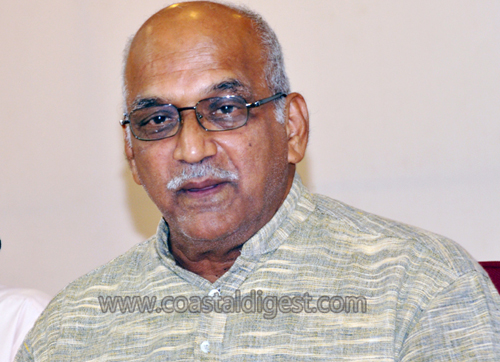
Mangalore, October 16: The methodology being used by Dakshina Kannada district administration in carrying out a survey to list the victims of endosulfan is faulty, alleged Dr. Ravindranath Shanbhag, President, Human Rights Protection Foundation, Udupi.
Addressing mediapersons at Press Club in Mangalore on Tuesday, Mr. Shanbhag said that the district administration is aiming to hold a survey in 78 villages in four taluks (Sullia, Puttur, Belthangady, Bantwal). As per the information collected from Karnataka Cashew Development Corporation (KCDC) by activists, aerial spray of endosulfan has been carried out in at least 92 villages, he said, and questioned as to why the district administration had left out the rest of the 14 villages.Further, villages of Udupi, Kundapur and Kumta divisions of KCDC where endosulfan was sprayed have been completely ignored, which is highly objectionable, Mr. Shanbhag said.
He also insisted that pregnant women be subjected to screening by the district administration in the affected villages. The district administration survey also does not take into account people from the village who have migrated to other cities after getting married and given birth to physically handicapped children there due to the effect of endosulfan, he added, and urged that people of marriageable age in these affected villages also be subjected to tests.
Taking a dig at C T Ravi, District in charge minister, DK, for his announcement that government would conduct a research to test the soil and water to measure the pollution caused by endosulfan, Mr. Shanbhag said that the last spray was way back in 2001 and there is no way the government would find traces of endosulfan in the samples taken today as seasons of rainfall have come and gone.
An attempt to avoid a ban on endosulfan is being made by authorities, Mr. Shanbhag said. The Supreme Court had asked the Indian Council of Medical Research (ICMR) to convey its stand on endosulfan and if needs to be banned, and the ICMR asked for three years' time to carry out a study, Mr. Shanbhag said, questioning the move of the ICMR as it has already held studies in this area in the past. Teams of KMC, Mangalore and Manipal, had conducted a study by taking grants from the ICMR and the body cannot claim that it does not possess that report after having spent tax payers' money on the study, he said.
In order to ensure that there is justice, the activists will approach the High Court of Karnataka, Mr. Shanbhag said. He also said on the occasion that he welcomes the gesture of the Karnataka High Court of issuing notice to Central and State governments after receiving a letter from Justice K L Manjunath alleging that the governments were not providing medical aid to endosulfan victims, besides appointing an amicus curiae to supervise the rehabilitation programme.










Comments
Add new comment